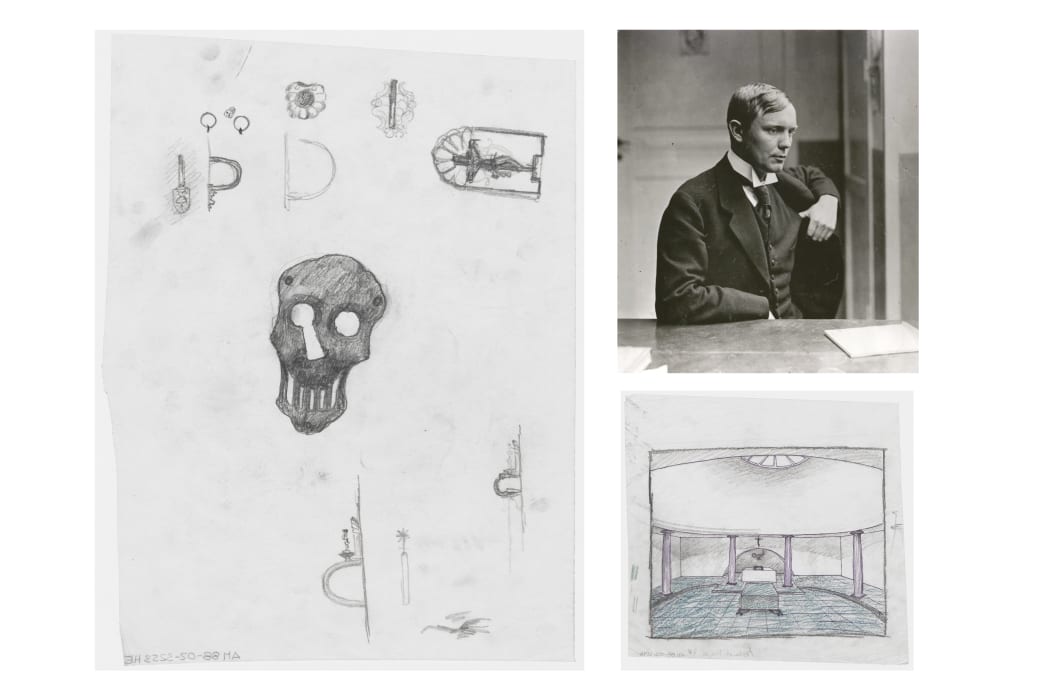Gunnar Asplund’s hidden cultural treasure to be made publicly accessible

On 22 September, the internationally acclaimed Swedish architect Gunnar Asplund would have
turned 130. To mark the anniversary, ArkDes – The Swedish Centre for Architecture
and Design – in Stockholm is making an hitherto unkown cultural treasure freely available to the public.
Unique original drawings and sketches of the Woodland Cemetery in southern
Stockholm – now a UNESCO World Heritage site – will be released via the web at www.digitaltmuseum.se so that anyone anywhere can browse through them. The material in the Asplund collection is sensitive and for reasons of preservation has been difficult to make available to anyone except a few experts. ArkDes is now changing that, as the result of a unique digitisation project. As of 22 September, anyone can study and download Asplund’s drawings of the Woodland Cemetry, which have not been shown before. The aim is for the entire Asplund collection, totalling 26 000 drawings, sketches and documents,to be freely available by the end of the year.
“The digitisation of Asplund’s entire collection is one of the most ambitious projects we have undertaken in this area and may be seen as part of a long-term strategy to make our material more widely accessible,” says Eric De Groat, Head of the ArkDes collections.
Asplund was a prominent figure in Nordic architecture and one of the foremost exponents
of 1920s classicism, known as ‘Swedish Grace’. As the main architect at the Stockholm International Exhibition he was one of the first to introduce functionalism in Sweden.
Asplund took part in many architectural competitions, including the one for the Woodland Cemetery contract, for which he was awarded together with his colleague Sigurd Lewerentz. Asplund was also a skilled furniture designer. He designed the ‘Asplund Lamp’ in 1922, for the Skandia cinema in Stockholm.
In 1918, Asplund married Gerda Sellman. They had four children, one of whom was the architect Hans Asplund, whose collection is also found at ArkDes. Gunnar Asplund is buried at the Woodland Cemetery that he himself designed. The headstone on his grave carries the legend ‘His work lives’. Today, his collection of letters, sketching pads, travel sketches,
artefacts and prototypes are part of the ArkDes collections.
Among Asplund’s best-known works are the Woodland Cemetery (Skogskyrkogården) in Stockholm, designed together with Sigurd Lewerentz, the Stockholm Public Library, the Paradise Cafe and Entry Pavilion at the 1930 Stockholm International Exhibition, the Gothenburg Courthouse Extension, Stockholm’s Skandia Cinema and the Listers County Courthouse in Sölvesborg. The Woodland Cemetery was listed as a UNESCO world heritage site in 1994.
The digitisation of the Asplund collection is co-financed by the Swedish Foundation for
Humanities and Social Sciences, and is being undertaken by the Media Conversion Centre at the National Archives of Sweden, in collaboration with ArkDes.
Read more about the Asplund project:
http://www.arkdes.se/articles/samlingarna/asplundsamlingen
More information: Maria Östman, maria.ostman@arkdes.se
About ArkDes (The Swedish Centre for Architecture and Design)
ArkDes is Sweden’s national centre for architecture and design. It is a museum, a study centre and an arena for debate and discussion about the future of architecture, design and citizenship.